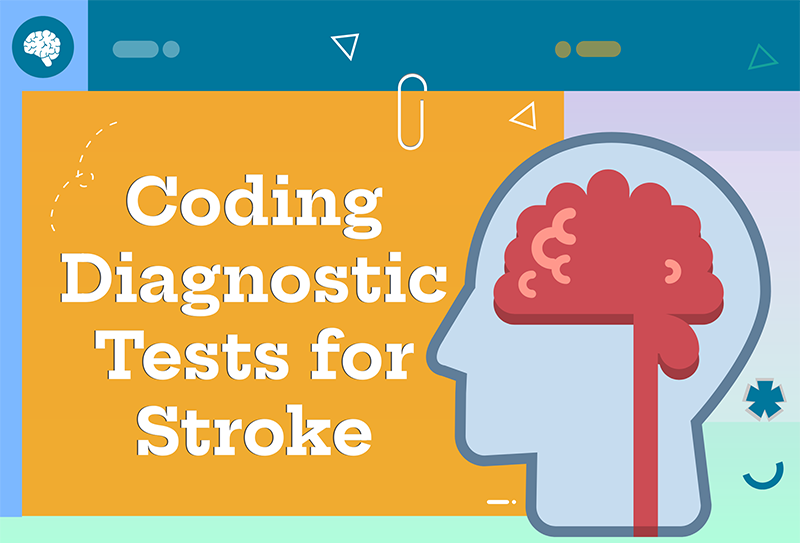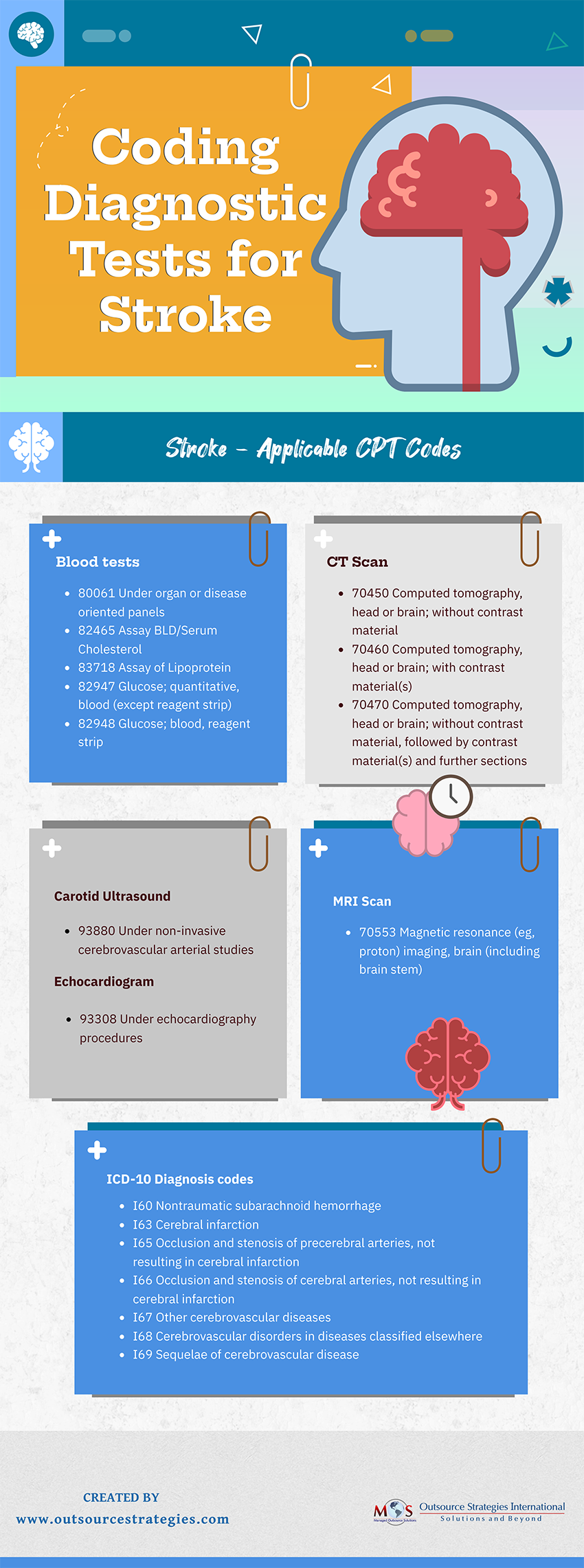Also known as a cerebrovascular accident or CVA, brain stroke is a medical emergency. When a patient arrives at the hospital with a suspected stroke, neurologists need to ensure that patients receive immediate and proper medical attention. The three main types of strokes are – Ischemic stroke, Hemorrhagic stroke, and Transient ischemic attack. Signs and symptoms associated with stroke include trouble with speaking and understanding, paralysis or numbness of the face, arm or leg (particularly on one side of the body), headache, problem with walking (including dizziness and lack of co-ordination) and vision problems in one or both eyes.
The patient has to undergo a number of tests to confirm the diagnosis and risk factors of the stroke. Diagnostic tests reported on medical claims include physical examination, blood tests, Computerized Tomography Scan (CT Scan), Magnetic Resonance Imaging (MRI), Carotid Ultrasound, and Echocardiogram. Neurology medical billing involves reporting these diagnostic tests and procedures using accurate ICD and CPT codes.
Check out the infographic below





